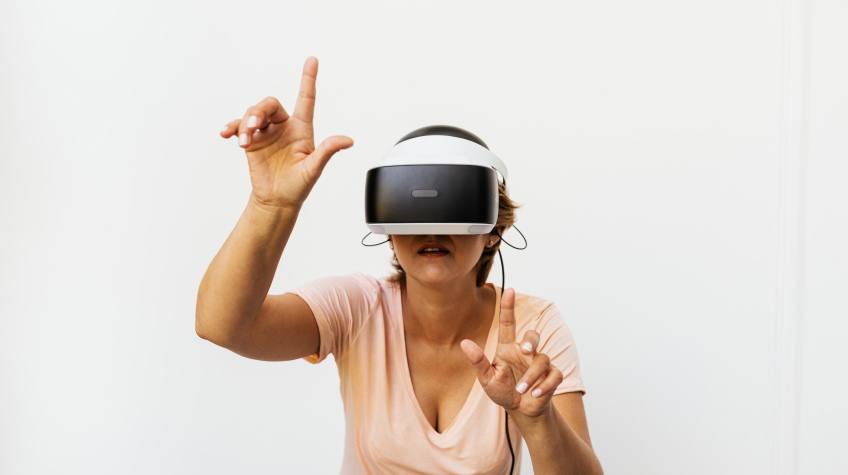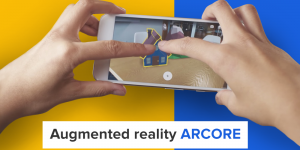
Virtual Reality (VR) and Augmented Reality (AR) are two technologies that have been gaining significant attention and are poised to shape the future. While both VR and AR create immersive experiences, they differ in the way they merge the virtual world with the real world. VR provides a completely virtual environment that users can interact with, while AR overlays digital content onto the real world. These technologies have the potential to revolutionize various industries, from gaming and entertainment to healthcare and retail.
In this article, we will explore the difference between VR and AR, their applications, current trends, and advancements, as well as the challenges and limitations they face.
The difference between VR and AR
One of the key distinctions between VR and AR lies in the level of immersion they offer. With VR, users are completely immersed in a virtual environment, often through the use of headsets and motion-tracking devices. This technology creates a sense of presence, transporting users to a different reality. On the other hand, AR enhances the real world by overlaying digital information onto the user’s view. This can be achieved through smartphone screens, smart glasses, or even contact lenses. AR allows users to interact with the real world while simultaneously accessing additional virtual content.
Another important difference between VR and AR is the level of interaction. In VR, users are typically able to interact with the virtual environment through hand controllers or other input devices. This enables them to manipulate objects and navigate through the virtual space. In contrast, AR focuses on enhancing the real world by providing users with additional information or digital objects. For example, AR can be used to display directions on a city street or provide real-time translations of foreign signs.
Applications of VR and AR
In the gaming and entertainment sector, VR has already made a significant impact. Virtual reality gaming allows players to fully immerse themselves in virtual worlds, providing a more engaging and interactive experience. With advancements in technology, VR has the potential to revolutionize not only gaming but also other forms of entertainment such as movies and live events.
AR, on the other hand, has found applications in fields such as healthcare and medicine. Surgeons can use AR to overlay digital information onto a patient’s body during surgery, providing real-time guidance and improving precision. AR can also be used in medical training, allowing students to practice procedures in a realistic yet controlled environment. Additionally, AR has the potential to assist in remote patient monitoring, enabling healthcare professionals to provide care and guidance from a distance.
Current trends and advancements in VR and AR technology
VR and AR technology have been evolving rapidly, with advancements and innovations being made on a regular basis. One of the current trends in VR is the development of standalone headsets that do not require a PC or console to function. These standalone headsets offer more freedom of movement and accessibility, making VR more accessible to a wider audience. Additionally, advancements in haptic feedback technology are making VR experiences more immersive by providing users with a sense of touch.
In the case of AR, the rise of wearable devices such as smart glasses has opened up new possibilities. Companies like Microsoft and Google have developed AR glasses that overlay digital information onto the user’s field of view, allowing for hands-free interaction with the virtual content. These advancements in hardware, combined with improvements in software development kits, are driving the adoption of AR in various industries.
The future of VR and AR in gaming and entertainment
The future of VR and AR in gaming and entertainment is promising, with the potential to transform the way we experience digital content. As VR technology becomes more advanced and affordable, we can expect to see a wider range of immersive gaming experiences. From realistic simulations to interactive storytelling, VR has the power to transport players to new worlds and provide unparalleled levels of engagement.
AR, on the other hand, has the potential to enhance live events and performances. Imagine attending a concert where digital effects and visuals are seamlessly integrated into the real-world stage. AR can also revolutionize the way we watch movies, allowing us to interact with characters and objects in the film. These advancements in AR technology have the potential to redefine the boundaries of entertainment and create entirely new experiences.
VR and AR in healthcare and medicine
In the healthcare and medicine industry, VR and AR have the potential to improve patient outcomes and revolutionize medical training. VR can be used to create realistic simulations for medical students, allowing them to practice procedures and gain hands-on experience in a safe environment. Surgeons can also benefit from VR by using it during complex surgeries to enhance precision and accuracy.
AR, on the other hand, can be used in telemedicine and remote patient monitoring. Healthcare professionals can use AR glasses to overlay patient data and medical information onto their field of view, enabling them to make informed decisions and provide real-time guidance. AR can also assist in surgical procedures by overlaying important information onto the surgeon’s view, reducing the risk of errors and improving patient safety.
VR and AR in education and training
The potential of VR and AR in education and training is immense. VR can transport students to historical events, scientific phenomena, or even other countries, providing a more immersive and engaging learning experience. Imagine studying ancient civilizations by exploring virtual ruins or conducting virtual chemistry experiments without the risk of accidents. VR can also be used to improve soft skills such as public speaking or teamwork through virtual simulations.
AR, on the other hand, can enhance traditional classroom learning by overlaying digital content onto textbooks or worksheets. Students can interact with 3D models or access additional information by simply pointing their smartphones or tablets at the page. AR can also be used for vocational training, allowing workers to practice complex tasks in a virtual environment before performing them in the real world. This can improve safety and efficiency in industries such as manufacturing and construction.
VR and AR in the retail industry
The retail industry is another sector that can benefit greatly from VR and AR technology. VR can be used to create virtual showrooms, allowing customers to explore products and make informed decisions without having to visit physical stores. Virtual try-on experiences can also be created, enabling customers to see how clothing or accessories would look on them before making a purchase.
AR, on the other hand, can enhance the in-store shopping experience by providing additional information or personalized recommendations. Customers can use AR apps to scan products and access reviews, compare prices, or even see how furniture or home decor would look in their own space. AR can also be used to create interactive displays or advertisements that capture the attention of customers and provide a memorable shopping experience.
Challenges and limitations of VR and AR
While VR and AR have immense potential, they also face several challenges and limitations. VR headsets and AR glasses can be expensive, making them inaccessible to a large portion of the population. Additionally, the technology is still evolving, and there are compatibility issues between different hardware and software platforms.
Another challenge is the potential for negative health effects. Prolonged use of VR headsets can cause motion sickness or eye strain, limiting the duration of immersive experiences. AR glasses, on the other hand, can obstruct the user’s view and pose safety risks if used in certain situations, such as while driving.
Privacy and security concerns are also important considerations. AR glasses, in particular, raise concerns about the collection and use of personal data, as they can potentially capture and analyze the user’s surroundings. Safeguarding user privacy and ensuring data security will be crucial for the widespread adoption of VR and AR technology.
Conclusion
In conclusion, the future of Virtual Reality (VR) and Augmented Reality (AR) is bright. These technologies have the potential to revolutionize various industries, from gaming and entertainment to healthcare and retail. The key difference between VR and AR lies in the level of immersion and interaction they offer. VR provides a completely virtual environment, while AR enhances the real world by overlaying digital content. Both technologies have found applications in fields such as healthcare, education, and retail.
Current trends and advancements in VR and AR technology include the development of standalone headsets, haptic feedback technology, and wearable devices like smart glasses. These advancements are driving the adoption of VR and AR in various industries and opening up new possibilities for immersive experiences and enhanced interactions.
However, VR and AR also face challenges and limitations, such as the high cost of entry, potential health effects, and privacy concerns.
VR and AR have the potential to transform the way we experience digital content, learn, and interact with the world around us. As technology continues to advance, we can expect to see even more innovative applications and exciting possibilities in the future. The future of VR and AR is here, and it is full of endless possibilities.






